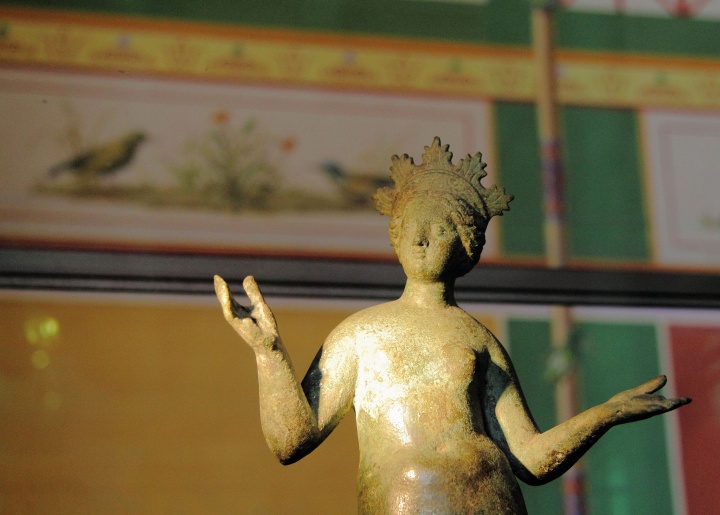

Information Related to "Gender Blurring in Pagan Worship"
 | Audio/Video |
 Maulaff via Wikimedia Commons
Maulaff via Wikimedia Commons
Ishtar was the prototype for the Greek Aphrodite and Roman Venus and a host of other deities -- and was identified with the planet Venus as the morning and evening star. The Bible equates the worship of pagan deities with the worship of demons (Deuteronomy 32:16-17; Psalms 106:35-38; 1 Corinthians 10:20). And it's intriguing to see that Scripture refers to Satan in his rebellion as Lucifer, the morning star (Isaiah 14:12). The devil is the real personage behind the false deity.
The Zondervan Illustrated Bible Backgrounds Commentary mentions the androgyny or gender ambiguity of Ishtar in its note on Deuteronomy 22:5 (2009, Vol. 1, p. 493), citing an enlightening source we now turn to -- Gender and Aging in Mesopotamia: The Gilgamesh Epic and Other Ancient Literature by Rivkah Harris (2000).
Ishtar, Harris explains, "is androgynous, marginal, ambiguous ... She is betwixt and between ... Central to the goddess as paradox is her well-attested psychological and physiological androgyny. Inanna-Ishtar is both female and male ... [in one place stating] 'Though I am a woman I am a noble young man'" (pp. 160, 163).
She shattered all gender and socioeconomic distinctions -- being both a royal queen and "the harlot of heaven ... set out for the alehouse" (p. 166). And in all this she was the role model for her followers. Among her powers was this from a Sumerian poem: "To turn a man into a woman and a woman into a man are yours, Inanna" (p. 160).
In the Descent of Ishtar we are told of some participants in her cult: "The male prostitutes comb their hair before her ... They decorate the napes of their necks with colored bands ... They gird themselves with the sword belt ... Their right side they adorn with women's clothing ... Their left side they cover with men's clothing ..." (p. 170). The revel and competition ended in a bloody spectacle of self-cutting (compare 1 Kings 18:28).
Harris states: "Their transvestitism simulated the androgyny of Inanna-Ishtar. It was perhaps the inversion of the male/female binary opposition that thereby neutralized this opposition. By emulating their goddess who was both female and male, they shattered the boundary between the sexes" (pp. 170-171). This was seen as a way of rising above the prison of the flesh.
©1995-2022 United Church of God, an International AssociationRelated Information:
Table of Contents that includes "Gender Blurring in Pagan Worship"
Other Articles by Tom Robinson
Origin of article "Gender Blurring in Pagan Worship"
Keywords: gender and paganism Ishtar androgynous transvestite
Sexual revolution: